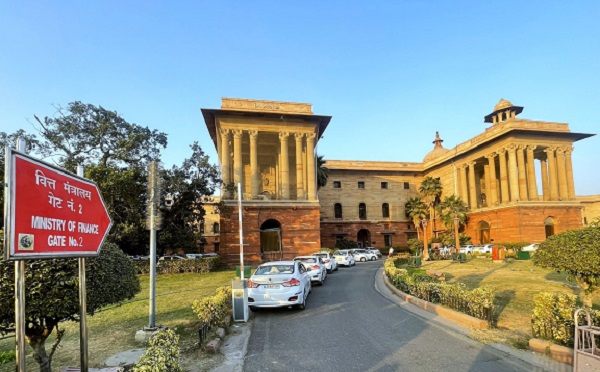.png)

Ajay Srivastava, founder of Global Trade Research Initiative, is an ex-Indian Trade Service officer with expertise in WTO and FTA negotiations.
April 13, 2025 at 9:13 AM IST
When US President Donald Trump shifted his trade war strategy from US-versus-the-world to US-versus-China, Indian exporters found themselves with an unexpected window. But even before the US paused its reciprocal tariff plans on other countries, one particular window had begun to widen for India—one defined by smaller shipment values but immense volumes.
Trump’s latest executive order, issued on April 9, eliminates a key exemption that had allowed small-value shipments from China and Hong Kong to enter the US duty-free. This “de minimis” rule, which previously let parcels valued under $800 bypass duties, was heavily exploited by Chinese e-commerce giants such as Shein and Temu, as well as platforms like Amazon. The executive order extends to e-commerce imports specifically, closing this loophole starting May 2.
Beginning that date, all e-commerce shipments from China and Hong Kong under $800 will face a steep 120% ad valorem duty. Additionally, the flat per-item duty will increase in two phases: from $75 to $100 between May 2 and May 31, and then further to $200 from June 1 onward. While other countries still enjoy the de minimis exemption, the Trump administration has indicated that similar restrictions could be extended globally. India must act fast to make the most of this narrow window.
The de minimis exemption, increased from $200 to $800 in 2016, was instrumental in enabling Chinese e-commerce players to flood the US market with ultra-low-cost goods. With this route now blocked for China, other exporting nations, including India, have a chance to step in. Indian e-commerce exporters—numbering over 100,000 and already generating $5 billion in annual exports—are well positioned to fill the void, especially in niche categories such as handcrafted goods, fashion accessories, and home décor.
But the opportunity won’t realise itself. India must act quickly to reform its trade ecosystem, which remains geared toward large, traditional exporters and is often unfriendly to smaller, digital-first sellers. For e-commerce exporters, bureaucratic bottlenecks and regulatory hurdles are more burdensome than beneficial.
A major bottleneck lies with Indian banks. These institutions are poorly equipped to manage the high-volume, low-value nature of e-commerce exports. Current RBI regulations permit only a 25% difference between declared shipping value and final payment—too narrow a band for online sales, where discounts, platform commissions, and returns regularly skew payment amounts. Raising this tolerance to 100% and empowering banks to approve such cases flexibly would go a long way.
Additionally, bank charges for reconciling small export payments—ranging from ₹1,500 to ₹2,000—often eat into profit margins or even exceed them. Waiving such fees for low-value exports and shifting to fully digital reconciliation systems would provide immediate relief. The RBI should also set enforceable service timelines and grievance mechanisms to ensure timely banking support.
India’s customs framework also needs an overhaul. Manual paperwork, restricted operating hours, and inconsistent inspections are incompatible with the real-time pace of global e-commerce. The system should pivot to 24/7 automated customs inspections, digitised documentation, and simplified checklists for small sellers. Moreover, courier-mode shipping—commonly used in e-commerce—should be upgraded to align with international norms, including recognising Delivered Duty Paid (DDP) arrangements. This would reduce misalignments between shipping terms and regulatory documentation, which often causes avoidable delays.
Access to affordable credit remains a persistent pain point. While large exporters secure loans at 7–10% and benefit from purchase-order financing, small online sellers often face interest rates of 12–15% and are excluded from public credit programmes. Classifying e-commerce exporters under priority sector lending could help bridge this gap and foster more inclusive growth.
Another critical policy shortfall is the lack of export incentives for shipments sent by courier, a method preferred by e-commerce exporters. These shipments currently do not qualify for key benefits such as RoDTEP (Remission of Duties and Taxes on Exported Products), Duty Drawback, or the Advance Authorisation Scheme. Extending these schemes to include courier-mode exports would level the playing field and encourage participation from smaller players.
India stands at the brink of a substantial e-commerce export opportunity as the US clamps down on China’s low-value trade dominance. But this window will not remain open forever. To compete globally and catalyse inclusive export-led growth, India must swiftly modernise its banking, customs, and trade support infrastructure to meet the demands of its digital economy. If done right, this moment could spark a new era in India's export journey—one that’s led not just by industrial giants, but by a vibrant army of small sellers.




